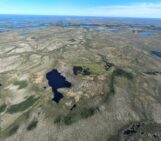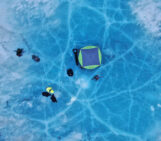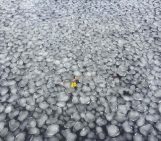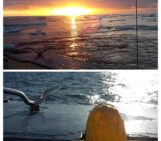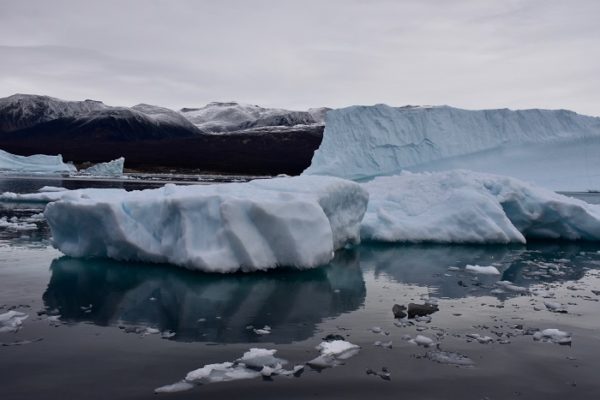
It is scary how fast the Greenland Ice Sheet is melting and how much freshwater it is discharging to the coastal areas around Greenland. This freshening is having a serious impact to coastal marine primary production, which is the foundation of the Arctic marine food web. Now, because of increased melting and freshwater discharge, we need to understand how coastal ecosystems will react. How will Arctic coastal ecosystems change? As highlighted by the IPCC, future ecosystem projections have a large degree of uncertainty because of a lack of long-term time series. To solve this, paleoclimate scientists can use marine sediment archives to produce long-term records of productivity and ecosystem changes under different climate conditions.
A harsh environment teeming with life
The Arctic is known for its harsh, long, cold, and dark winters. You know how short and mild the summers are when you hear the joke “The last summer was on a Tuesday”. But seriously, we are talking about extreme conditions, where only the most specialised species can survive. Despite the icy conditions, Arctic coastal regions are full of life. Especially Arctic fjords have a high marine primary production which sustains large fisheries and support higher trophic levels such as seals, whales, sea birds, and other marine mammals. These fisheries and other marine resources around Greenland are essential for the indigenous people. Their nutrition and identity are tightly linked to harvesting and hunting of marine species, and fisheries around Greenland make about 90 % of the country´s total export.
From the oceans to our dinner table, or not?
The coastal marine ecosystems are literally on the front line of the changing cryosphere, as the Greenland ice sheet discharges ca. 1000 Gt of freshwater every year (Mankoff et al. 2020). This fierce number is even expected to increase in the future (Fettweis et al., 2013). Freshwater discharge and the rapidly diminishing sea ice cover are today changing the physical and chemical properties of the water column (read more Greenland’s fjords in this blog post). Together with other controlling factors, such as glacier type, fjord geometry and nutrient availability, these changes are governing the primary production in the fjords (Hopwood et al., 2020). Recent studies have shown that the marine terminating parts of the ice sheet are crucial for the primary production. As the subglacial meltwater discharges from marine-terminating glaciers, an upwelling is caused, which brings nutrients from the deep water to the surface for the primary producers. Because of this process, the highest fjord primary production rates are found close to marine-terminating glaciers (Meire et al., 2017).

Marine-terminating glaciers support higher marine productivity close to glacier terminus because subglacial melting causes upwelling of nutrient rich deep waters to the surface for the phytoplankton (modified from Meire et al., 2017).
As the Greenland Ice Sheet is losing mass rapidly and its marine-terminating glaciers are retreating towards the land, the question is: “What will happen to these vulnerable coastal ecosystems in the future?” In detail, this means we do not know if fjords will bloom and flourish with numerous species, or if the marine production will slowly decrease leading to significantly smaller fishery yields. Our knowledge of cryosphere impacts on coastal ecosystems is limited and mostly based on monitoring data, such as from the Greenland Ecosystem Monitoring (GEM). However, these monitoring datasets often cover only the last few decades, when the Arctic already experienced many rapid changes. But luckily, marine sediment archives can provide us a long-term paleo-perspective and tell us more about the natural state of ecosystems and how cryosphere changes impacted them before human-caused climate change started. This way we can understand the recent changes in a wider context of long-term natural variability.
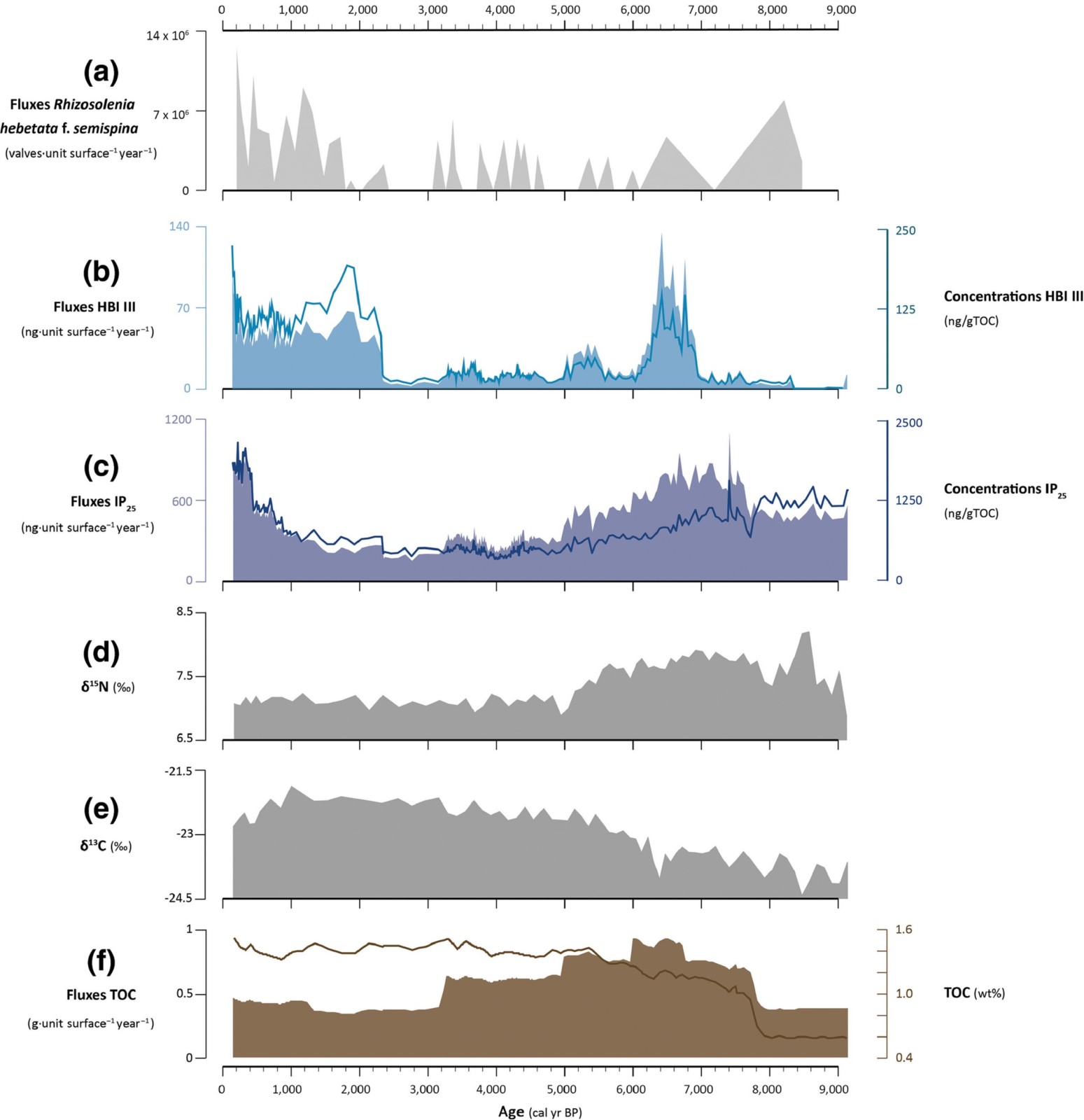
Marine proxies used to investigate sea ice and marine productivity changes during the last 9 000 years (Limoges et al. 2020).
Improving coastal marine proxies
Marine sedimentary proxies are physical, chemical, or biological material preserved in sediments on the ocean floor. They provide insights into past environmental conditions, ecosystem dynamics, biodiversity, and primary production. Marine phytoplankton (microscopic algae such as diatoms and dinoflagellates) are the main primary producers in the (Arctic) marine environment. They produce more than a half of the current atmospheric oxygen through a photosynthesis. But they are also highly sensitive to changes in temperature, salinity, sea ice, and nutrient input, so changes in these environmental parameters will let them either thrive or decrease. Microfossil records of these phytoplankton groups in marine sediments hold information both on past environmental conditions in general and marine productivity. Together with biogeochemical analyses of the sediments such as total organic carbon and biogenic silica content, and stable carbon and nitrogen isotopes (see the Figure above), we can draw an even bigger picture of the paleo-environment and its productivity.
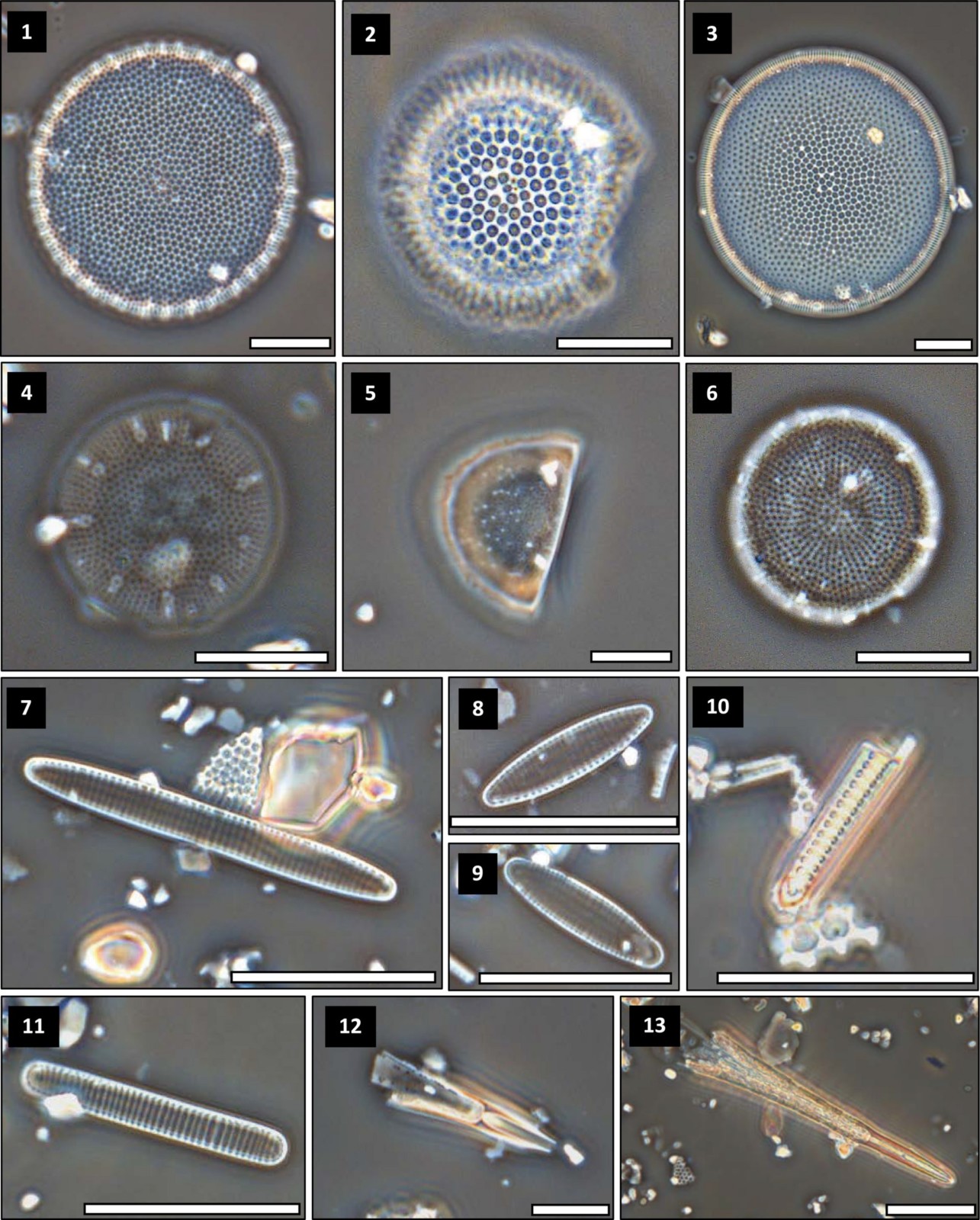
Microscope photos of diatoms which are excellent tool for reconstructing past environments and marine productivity due to their sensitivity to environmental parameters (Limoges et al. 2020).
Despite their huge potential, our current knowledge and understanding of marine proxies is based mainly on open-ocean sites as previously marine paleo-studies have mainly focused on open-ocean sites, where the longest records can be obtained. But there is a need for calibrating and refining marine sediment proxies for coastal regions, as they encounter different environmental conditions (e.g., in salinity). The Past Global Changes (PAGES) working group Arctic Cryosphere Change and Coastal Marine Ecosystems (ACME), aims to address the knowledge gaps in the use of marine proxies and work towards better understanding of how marine proxies function in a coastal environment. This holds a lot of potential for a more robust climate records from coastal regions in the future. Considering how important marine life is for the people in Greenland and how essential it is to understand what kind of impacts the changing cryosphere imposes to marine life, it is very important that we use the most accurate tools. In the end, understanding the past environment changes can hopefully lead for more reliable future projections (Heikkilä et al. 2021).

Past Global Changes (PAGES) working group Arctic Cryosphere Change and Coastal Marine Ecosystems (ACME)
Further reading
Heikkilä et al. (2021) Predicting the future of coastal marine ecosystems in the rapidly changing Arctic: the potential of paleoenvironmental records. Anthropocene, https://doi.org/10.1016/j.ancene.2021.100319.
Hopwood et al. (2020) How does glacier discharge affect marine biogeochemistry and primary production in the Arctic? Cryosphere, DOI: https://doi.org/10.5194/tc-14-1347-2020.
Limoges et al. (2020) Learning from the past: Impact of the Arctic Oscillation on sea ice and marine productivity off northwest Greenland over the last 9,000 years. Global Change Biology, DOI: https://doi.org/10.1111/gcb.15334.
Edited by Giovanni Baccolo and Maria Scheel
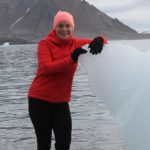 Mimmi Oksman is a postdoc at the Geological survey of Denmark and Greenland, GEUS, at the department of Glaciology and Climate. She works with paleoceanography and paleoclimate studies with focus on interactions between the ocean and the cryosphere. She tweets as @MimmiOksman. Contact email: mio@geus.dk
Mimmi Oksman is a postdoc at the Geological survey of Denmark and Greenland, GEUS, at the department of Glaciology and Climate. She works with paleoceanography and paleoclimate studies with focus on interactions between the ocean and the cryosphere. She tweets as @MimmiOksman. Contact email: mio@geus.dk
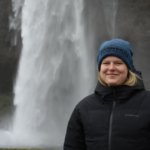 Anna Bang Kvorning is a PhD Student at the University of Copenhagen, DK and at GEUS in the Department of Glaciology and Climate. She investigates past variability in ocean conditions and marine productivity linked to cryosphere changes. She tweets as @AnnaKvorning. Contact Email: asbn@geus.dk
Anna Bang Kvorning is a PhD Student at the University of Copenhagen, DK and at GEUS in the Department of Glaciology and Climate. She investigates past variability in ocean conditions and marine productivity linked to cryosphere changes. She tweets as @AnnaKvorning. Contact Email: asbn@geus.dk

